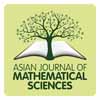The Critics and Contributions of Mathematical Philosophy in Hong Kong Secondary Education
Main Article Content
Abstract
There are various schools of mathematical philosophy. However, none of them can be founded on mathematics alone. At the same time, there are two types of mathematical proof styles: Dialectic and algorithm mathematical proof. The relationship between proof and philosophy is to study philosophical problems with mathematical models. This type of proof is important to Hong Kong Secondary education. In addition, teachers should explain the connection between mathematics-based subjects, such as physics, so that lessons are more interesting rather than technical. Mathematics relates to nearly all other subjects, and as such has the role of a “public servant†when it comes to serving them. One role of mathematics is to act as a “rational†instrument for various subjects. This can be shown in many ancient human activities, such as Daoism and Hiu, together with their symbolic representations. These examples are similar to Jewish culture; when discussing confidence, Abraham is often mentioned due to being the “Father of Confidence.†Thus, it may be said that mathematics is more than just a servant — it is also a cultural subject that has been recorded throughout history. At the same time, in ancient China, what Daoism tried to do was a searching for the unity between human and nature. This is a kind of Taiwan philosophy. It tells us that there are always connection human and nature. Thus, man should follow strictly to the rule of nature so that one can finally achieve the harmony between man and nature. To conclude, other than mathematical proof, Hong Kong teachers should also allow students to learn the cultural context behind various topics and subjects.
Article Details
This is an Open Access article distributed under the terms of the Attribution-Noncommercial 4.0 International License [CC BY-NC 4.0], which requires that reusers give credit to the creator. It allows reusers to distribute, remix, adapt, and build upon the material in any medium or format, for noncommercial purposes only.
